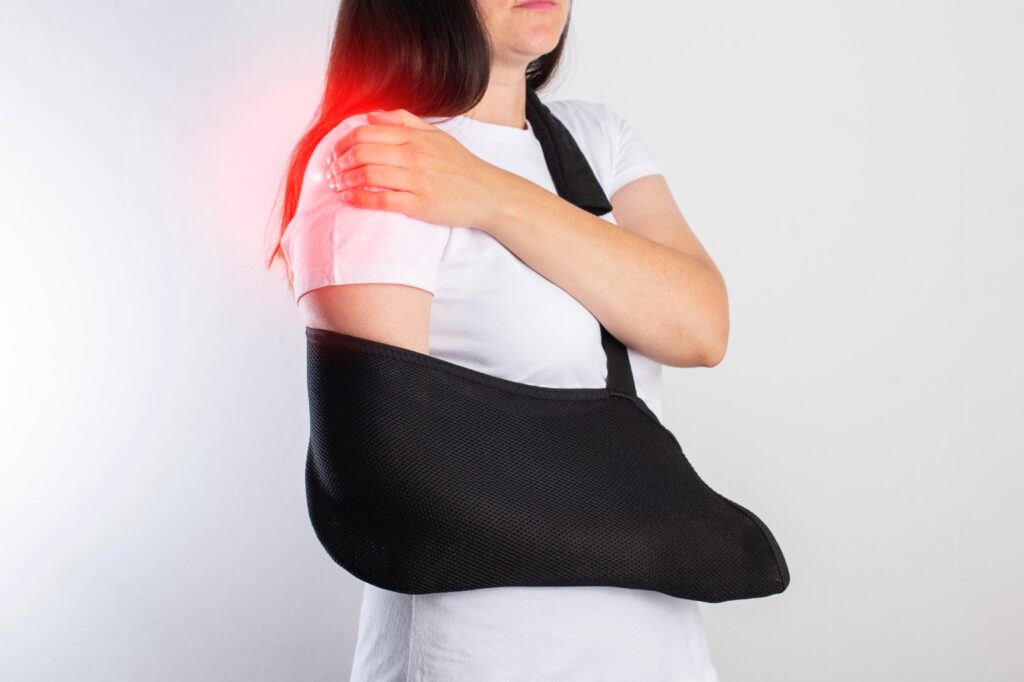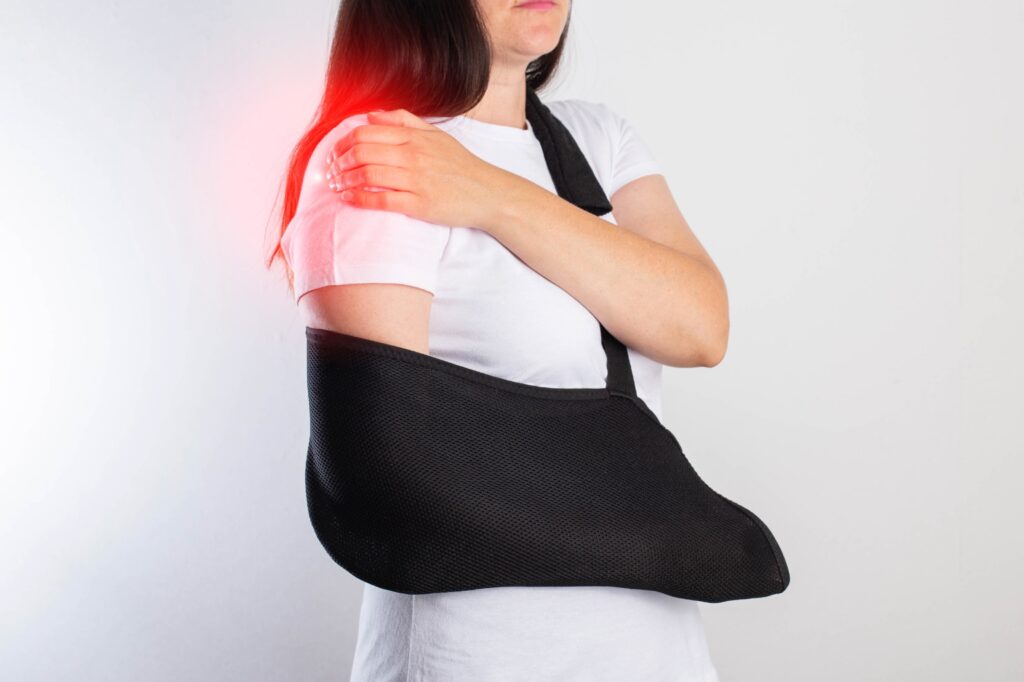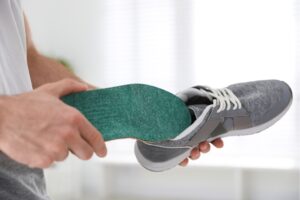
Understanding Shoulder Dislocation Injuries
Shoulder dislocation occurs when the head of the humerus (arm bone) pops out of the shoulder socket. It can be caused by various factors and is often accompanied by noticeable symptoms. Understanding the causes, symptoms, and treatment options for shoulder dislocation is crucial for managing this condition effectively.
Recognizing the Symptoms of a Shoulder Dislocation
Symptoms include:
- Intense pain in the shoulder area
- Swelling and bruising
- Limited range of motion
- Deformity or protrusion of the shoulder joint
If you experience any of these symptoms, it is important to seek medical attention as soon as possible.
Causes of Shoulder Dislocation include:
- Sports injuries or accidents, particularly direct impacts to the shoulder or falls on extended arm and forearm
- Repetitive or excessive overhead arm movements, common in activities like swimming or throwing sports
- Weak or unstable shoulder ligaments and muscles
Long-term Impact and Complications
If left untreated, shoulder dislocation can have long-term impact and complications. These may include:
- Recurrent dislocations: Once you’ve experienced a shoulder dislocation, the chances of it happening again in the future increase significantly, especially if the dislocation causes the joint capsule to stretch.
- Chronic pain and Swelling: Dislocations can change the tension on the ligaments and tendons in the shoulder causing pain with movement and excess fluid collecting in the joint.
- Rotator Cuff Injuries: When the shoulder is dislocated, it puts significant strain on the rotator cuff which can result in tears.
Physiotherapy in Shoulder Injury Rehabilitation
Every shoulder dislocation (and injury for that matter) is unique. Etobicoke High Performance Health Clinic offers an array of treatment options tailored to every individual and their specific injury. We provide the latest technology including Shockwave Therapy, Level 4 Summus Laser Technology, Acupuncture, and Active Release Therapy. Our team of professionals including Chiropractors, Physiotherapists, Massage therapists, and a Kinesiologist/Personal trainer is committed to providing the best outcome of each injury by providing effective rehabilitation and assisting in the prevention of further injury.
Importance of Early Intervention
Early intervention plays a crucial role in the successful rehabilitation of shoulder dislocations. Seeking prompt medical attention and beginning physiotherapy as soon as possible can help minimize long-term complications and improve overall recovery. By addressing any weakness or instability in the shoulder joint early on, individuals can regain strength and function faster, reducing the risk of recurrent dislocations. Physiotherapy techniques such as exercises to strengthen the surrounding muscles and stability training can make a significant difference in preventing further injury and promoting optimal healing. Don’t wait to seek treatment – take control of your shoulder health today.
Customized Treatment Approaches
At Etobicoke High Performance Health Clinic, we understand that every shoulder injury is unique and requires a personalized treatment approach. Our team of experienced health professionals will assess your specific injury and create a customized rehabilitation plan to address your individual needs.
We utilize a variety of treatment options, including manual therapy techniques, therapeutic exercises and modalities such as shockwave therapy and electrical stimulation. These interventions aim to reduce pain, restore mobility, improve strength and stability, and promote overall healing. Our physiotherapy sessions are tailored to target the specific impairments associated with shoulder dislocations and other shoulder injuries.
Level 4 Summus Laser Technology: At Etobicoke High Performance Health Clinic, we are proud to offer the latest advancements in technology, including Level 4 Summus Laser Technology, as part of our comprehensive approach to shoulder dislocation rehabilitation. This cutting-edge laser therapy has been proven to accelerate the healing process by increasing blood flow and promoting tissue regeneration.
The Level 4 Summus Laser works by delivering a precise wavelength of light energy deep into the affected tissues. This stimulates cellular activity and promotes the production of collagen, which is essential for tissue repair. The laser also helps to reduce inflammation and pain, allowing for more effective and comfortable treatment sessions.
One of the key benefits of this technology is its non-invasive nature. Unlike traditional treatment methods, this advanced laser therapy does not require any incisions or needles. It is a painless and safe solution that can be used alongside other treatment modalities to maximize your recovery.
During your session, you will simply relax as the laser is applied to the targeted area. The light energy will penetrate deep into the tissues, promoting healing from within. Many patients report feeling a soothing warmth during the procedure, which further enhances relaxation.
Effective Exercises for Shoulder Rehabilitation
Pendulum Stretch
The pendulum stretch is a simple yet effective exercise that can help alleviate pain and improve range of motion in the shoulder after a dislocation. To perform this exercise, stand next to a table or chair for support. Lean forward and let your affected arm hang down. Gently swing your arm in small circles, both clockwise and counterclockwise, using a pole or stick to navigate the injured arm and avoid excess stress. This motion helps to loosen up the shoulder joint and increase flexibility.
This exercise is vital in the early rehab process. It helps to free up some of the range of motion in the shoulder. Having good range of motion in the shoulder makes performing more advanced rehab exercises much easier later in the rehab process. As you progress through your shoulder dislocation rehabilitation, it is important to incorporate effective exercises that will help restore mobility and strength to your injured shoulder.
Passive Range of Motion Exercises
Some passive exercises for the shoulder include gentle stretching and movement of the joint without actively using the muscles. These exercises are particularly useful in the early stages of shoulder dislocation rehabilitation when you may not have full control over your arm movements.
In addition to the pendulum stretch, there are other passive stretches and exercises that are vital to the recovery from shoulder injuries. They can be as simple as moving the shoulder through it’s range of motion with a dowel/hockey stick, or even your other arm. Improvement of the range of motion in the shoulder is extremely important after a traumatic injury.
Isometric Exercises for the Shoulder
Isometric exercises for the shoulder are a great way to strengthen the muscles around the joint without putting too much strain on it. These exercises involve contracting the muscles in your shoulder without actually moving it. One example is the “wall push” exercise, where you stand facing a wall with your affected arm bent at a 90-degree angle and push against the wall for about 10 seconds.
Another similar exercise is very similar, with the affected arm bent at 90 degrees push the elbow into a wall or countertop (any solid surface) behind you for about 10 seconds.
These isometric exercises help to build stability and endurance in the shoulder joint, which is crucial for preventing future dislocations. Remember to start with light resistance and gradually increase as you gain strength. These exercises are also very beneficial if you are still unable to move the arm through it’s range of motion on it’s own as it allows you to build up the strength to do so.
Scapular Stability Exercises
Scapular stability exercises are another important component of shoulder dislocation rehabilitation. The scapula, also known as the shoulder blade, plays a crucial role in supporting and stabilizing the shoulder joint.
One effective exercise for scapular stability is the “scapular retraction.” To perform this exercise, sit or stand with good posture and gently squeeze your shoulder blades together. Hold this position for a few seconds and then release. Repeat this exercise several times to strengthen the muscles around your scapula.
These types of exercises are very important while you are still limited in your ability to move the shoulder effectively. They help to build strength and stabilize the shoulder. As the shoulder recovers and active movement is more of a possibility, it is still a good idea to continue these exercises to prevent a re-aggravation of the injury.
Bodyweight Shoulder Flexion, Extension, and Abduction
Bodyweight shoulder exercises are an essential component of shoulder rehabilitation. These exercises help to strengthen the muscles surrounding the shoulder joint, improve stability, and restore function.
Shoulder flexion exercise involves raising your arms directly in front of you until they are parallel to the ground. This exercise targets the anterior deltoid muscle and helps to improve shoulder mobility. To begin, stand tall with your weight evenly distributed over both feet. Keep your elbow close to your side and slowly bring your arm up. Hold for 2 seconds. Slowly return to the starting position and repeat. Tip: Do not do the exercise too quickly or swing your arm.
Shoulder extension exercise focuses on strengthening the muscles at the back of your shoulders. Begin with your arms by your sides and slowly lift them straight backward while maintaining a slight bend in your elbows. This exercise targets the posterior deltoid muscle and helps to improve overall shoulder strength and stability, particularly in the upper back.
Shoulder abduction exercise is done by lifting your arms out to the sides, away from your body. Start with your arms by your sides and slowly raise them outwards until they are parallel to the ground. This exercise targets the lateral deltoid muscle, teres minor, and helps to improve shoulder range of motion.
To perform these bodyweight exercises, make sure to focus on proper form and technique, and gradually increase the difficulty as you progress with your shoulder rehabilitation. It is important to remember that these exercises should only be done under the guidance of a healthcare professional or a qualified trainer.
Internal and External Rotations
Internal and external rotations are essential exercises for shoulder rehabilitation following a dislocation. These exercises specifically target the muscles responsible for stabilizing the shoulder joint.
To perform internal rotations, start by attaching a resistance band to a stable object at waist level. Hold the other end of the band with your affected arm, keeping your elbow bent to 90 degrees and your forearm parallel to the floor. Slowly rotate your arm inward towards your body, maintaining control throughout the movement. Keep your elbow and upper arm firmly tucked against the towel roll or the side of your body during this movement. Repeat for a set number of repetitions.
External rotations are performed in a similar manner but with the resistance band attached behind you instead. Again, keeping your elbow bent to 90 degrees and forearm parallel to the floor, slowly rotate your arm outward away from your body. This exercise targets the muscles responsible for external rotation of the shoulder joint.
Both internal and external rotations are crucial for rebuilding strength and stability in the shoulder after a dislocation. These exercises help to restore balance between the muscles surrounding the joint, preventing future injuries and improving overall shoulder function.
It’s important to start with light resistance or no resistance at all, gradually increasing the load as you progress. Always listen to your body and stop if you experience any pain or discomfort during these exercises.
Managing Pain and Preventing Recurrence
One of the key aspects of shoulder dislocation rehabilitation is managing pain and preventing recurrence. Our team of physiotherapists understands the importance of addressing these concerns to ensure a successful recovery.
Preventing recurrence is crucial in shoulder dislocation rehabilitation. Our exercise programs are specifically designed to strengthen the muscles supporting the shoulder joint, improving stability and reducing the risk of future dislocations. Additionally, our physiotherapists will provide guidance on proper body mechanics and techniques to prevent re-injury during daily activities or sports.
Can a Dislocated Shoulder Heal Completely with Physiotherapy?
Physiotherapy plays a crucial role in helping a dislocated shoulder heal completely. Through a combination of targeted exercises and proper guidance from a physiotherapist, you can strengthen the muscles around your shoulder joint and improve its stability.
The exercises prescribed by your physiotherapist, such as external rotations, internal rotations, and scapular stabilization exercises, are designed to increase the strength and endurance of the muscles involved in supporting your shoulder. By consistently performing these exercises, you can gradually regain full range of motion and prevent future dislocations.
However, it is important to note that the healing process varies from person to person, and our team is committed to ensuring that you receive the best care possible!
Questions:
1. How long does it typically take to recover from a dislocated shoulder with physiotherapy?
The duration of recovery from a dislocated shoulder can vary depending on the severity of the injury and individual factors. In general, with proper physiotherapy and adherence to rehabilitation exercises, most people can expect to see significant improvement within the first few weeks. However, full recovery may take several months as the muscles and ligaments around the shoulder joint regain strength and stability. Your physiotherapist will be able to provide a more personalized estimate based on your specific situation.
2. What are some common rehabilitation techniques used in physiotherapy for shoulder dislocation?
In physiotherapy, there are several common rehabilitation techniques that are used to help individuals recover from a dislocated shoulder. These techniques aim to improve range of motion, strength, and stability in the shoulder joint. Some commonly used techniques include:
1. Range of motion exercises: These exercises help restore the normal movement of the shoulder joint by gently stretching and mobilizing the muscles and ligaments.
2. Strengthening exercises: Strengthening exercises target the muscles around the shoulder joint to increase stability and prevent future dislocations. This may involve using resistance bands, weights, or bodyweight exercises.
3. Stability exercises: These exercises focus on improving the stability of the shoulder joint by strengthening the surrounding muscles and promoting proper alignment.
4. Manual therapy: Manual therapy techniques such as massage, joint mobilization, and soft tissue mobilization may be used to reduce pain, improve circulation, and alleviate muscle tension.
5. Functional training: Functional training involves performing specific movements or activities that mimic real-life tasks to help individuals regain their functional abilities and optimize shoulder function.
It’s important to follow your physiotherapist’s guidance and instructions during your rehabilitation process. Consistency and patience are key to achieving optimal recovery from a shoulder dislocation. With proper rehabilitation techniques, you can regain strength, stability, and function in your shoulder joint. Remember to communicate any discomfort or concerns with your physiotherapist so that they can adjust your treatment plan accordingly.
References
American Physical Therapy Association. (2021). Shoulder Rehabilitation: Acute and Chronic Injuries. Retrieved from https://www.choosept.com/symptomsconditionsdetail/physical-therapy-guide-to-shoulder-rehabilitation
Mayo Clinic. (2020). Dislocated shoulder. Retrieved from https://www.mayoclinic.org/diseases-conditions/dislocated-shoulder/diagnosis-treatment/drc-20371731 Title: The Future of Shoulder Dislocation Rehabilitation
While You’re Here…
Browse Services Available at EHP here: https://www.etobicokehealthclinic.com/services/
Check Out the Products we Carry In-Clinic and Online: https://www.etobicokehealthclinic.com/products/
Get To Know Our Staff: https://www.etobicokehealthclinic.com/practitioners/
Take a Look at Our Current Promotions: https://www.etobicokehealthclinic.com/promotions/
Read More Blogs From Us Here: https://www.etobicokehealthclinic.com/blog/
Book an Appointment Now: https://etobicokehighperformancehealth.janeapp.com/
Contact Us Here: https://www.etobicokehealthclinic.com/contact/
Follow Us on Instagram: https://www.instagram.com/ehpclinic/



